


|
|
|
|||||||||||||||
|
|
||||||||||||||||
|
|
|||
|
|
London The Thames Barrier 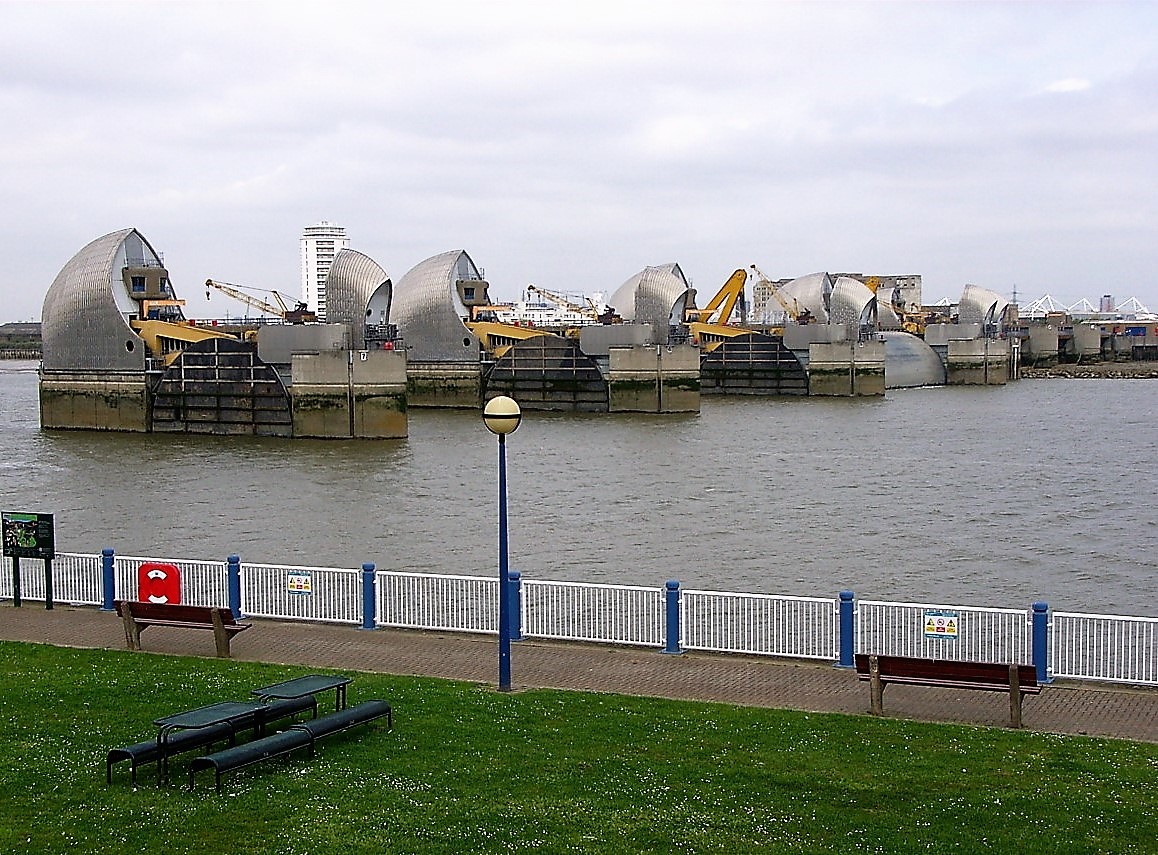
Throughout history, London has suffered from flooding. Samuel Pepys recorded in his diary in 1663 of the greatest tide ever remembered in England, and all White Hall having been drowned. In January 1928, 14 people drowned, and thousands had to leave their homes when flooding hit Victoria and Chelsea. In 1953 a huge tide surge killed 307 people in eastern England and sent high waters up the Thames to spill into the streets of London's East End and thousands had to flee. Prior to the completion of the barrier, the main flood defence for London involved the construction of higher and stronger river walls and embankments. Although this was a solution it would have created problems in itself, particularly with regard to views and access to the Thames. Research carried out by the government found that the best solution would be for a flood barrier with moveable gates built across the Thames. A project that was to commence in 1974 coordinated by the former Greater London Council. The work took until 1982 to complete a barrier when it was first used with it being officially opened by Queen Elizabeth II, on May 8, 1984. Without the barrier not only would such things as access to the Thames be affected but also parts of the London Underground system, the Houses of Parliament, the O2 Arena and the Tower of London be liable to periodic flooding. The Barrier conceived was to be a retractable system that is designed to prevent the floodplain of most of Greater London from being flooded by exceptionally high tides and storm surges moving up from the North Sea. It protects 125 square kilometres of central London from flooding caused by tidal surges. The location was chosen due to the riverbanks being relatively straight at this point and the chalk riverbed being strong enough to support the weight of the barrier. 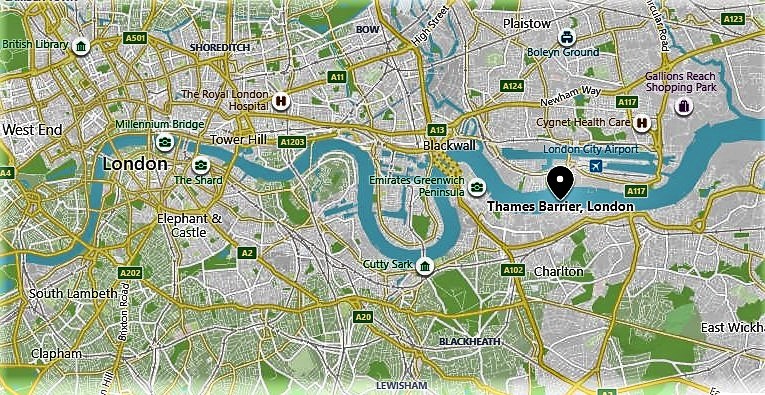 The barrier incorporates 10 flood gates that regulate the flow of water. They are circular segments that move into position by rotating. The gates, when raised, are each 20.1meter high, which is the equivalent of a 5-storey building and weighs 3,300 tonnes, they are hollow and fill with water as they sink and empty as they rise from the river. They were designed by Charles Draper who based the designed on the taps on his gas cooker and were made by Cleveland Bridge UK Ltd. The construction work on-site was undertaken by a consortium made up of Costain/Hollandsche Beton Maatschappij/Tarmac Construction. In addition to the barrier, the flood defences for 11 miles (18 km) downriver needed to be raised and strengthened. Built across a 520-metre (570 yds) wide stretch of the river, the barrier divides the river into four 61-metre (200 ft) and two approximately 30-metre (100 ft) navigable spans. There are also four smaller non-navigable channels between nine concrete piers and two abutments. The flood gates across the openings are circular segments in cross-section, and they operate by rotating, raised to allow "under spill" to allow operators to control upstream levels and a complete 180-degree rotation for maintenance. All the gates are hollow and made of steel up to 40 millimetres (1.6 in) thick. These lay on the river bed and allow the water to flow over them but can be lifted to form the barrier and stop the flow of the water. 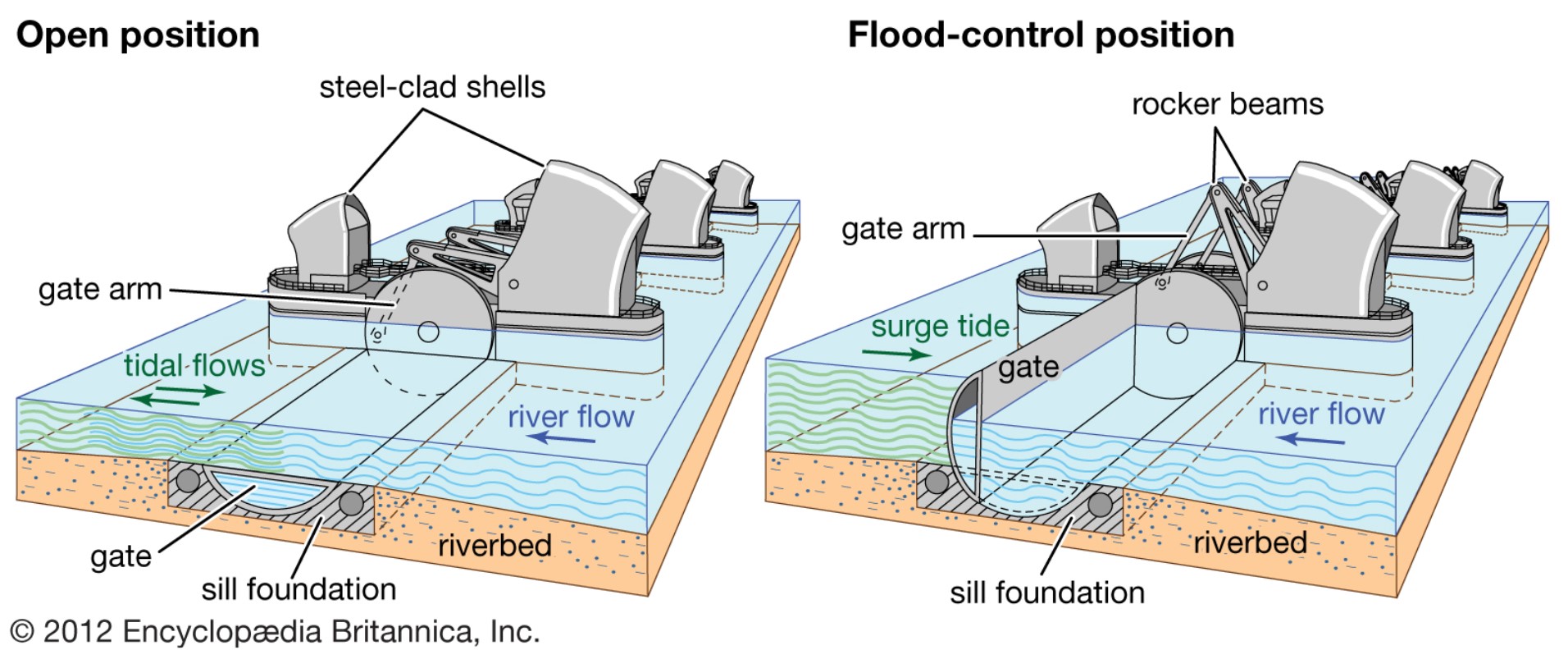 It is the devices that are used to lift the gates that can be seen to lift the gates into the closed position that are seen stretching across the river. 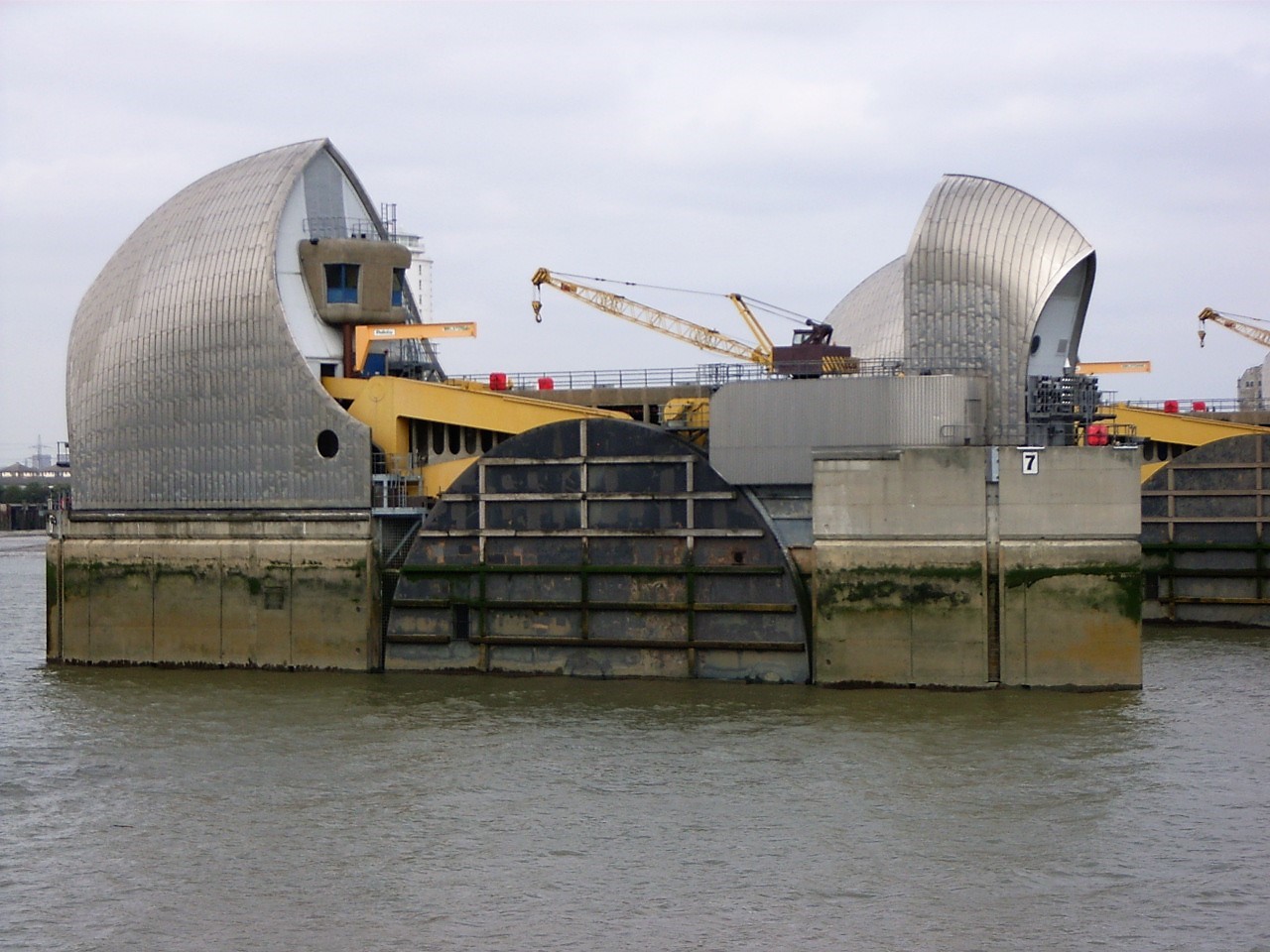 The cost of the barrier amounted to £500 million. The barrier is operated by the Greater London Council. At the time of writing of this article in January 2021, the Thames Barrier has been closed 195 times since it became operational to protect the 125 square kilometres of central London from flooding, although it is also raised on a monthly basis for maintenance and testing. If water levels could exceed 16 feet in central London the flood defence is likely to be triggered. This starts about 9 hours before the dangerous high tide reaches the barrier and river traffic is stopped. All smaller gates are closed followed by the main barrier. The gates remain closed until the tide downstream of the barrier falls to the same level as the water level upstream. The barrier does have a small information centre that explains the flood risk to London and the history and environment of the River Thames. This shows a film on the construction, a virtual technical tour film and interactive displays and there is a working model of the Thames Barrier showing how the gates are raised and lowered. 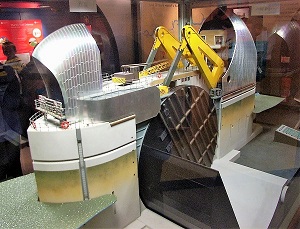 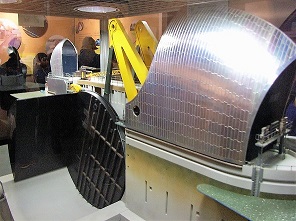 |
|
|
|
|
|||
All Photographs were taken by and are copyright of Ron Gatepain
| Site Map |
